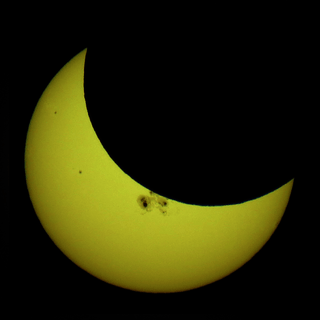Solar eclipse of April 28, 1949
A partial solar eclipse occurred on April 28, 1949.
| Solar eclipse of April 28, 1949 | |
|---|---|
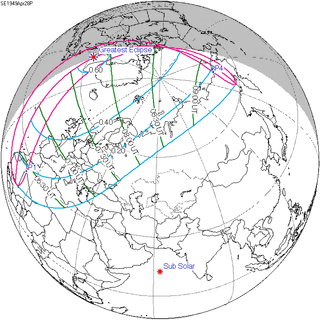 Map | |
| Type of eclipse | |
| Nature | Partial |
| Gamma | 1.2068 |
| Magnitude | 0.6092 |
| Maximum eclipse | |
| Coordinates | 61.9°N 55.7°W |
| Times (UTC) | |
| Greatest eclipse | 7:48:53 |
| References | |
| Saros | 147 (19 of 80) |
| Catalog # (SE5000) | 9396 |
Related eclipses
Solar eclipses 1946–1949
This eclipse is a member of a semester series. An eclipse in a semester series of solar eclipses repeats approximately every 177 days and 4 hours (a semester) at alternating nodes of the Moon's orbit.[1]
| Ascending node | Descending node | |||
|---|---|---|---|---|
| 117 | May 30, 1946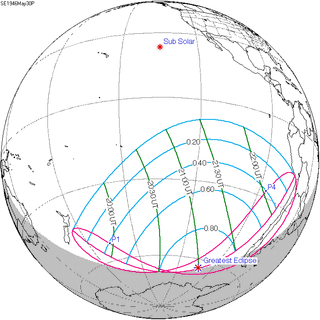 Partial |
122 | November 23, 1946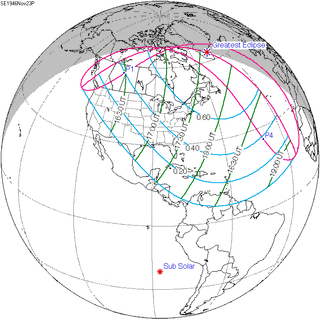 Partial | |
| 127 | May 20, 1947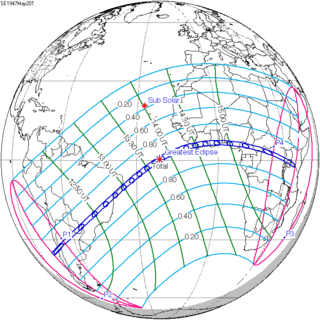 Total |
132 | November 12, 1947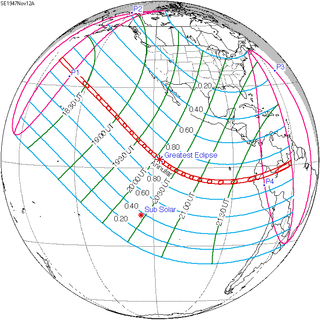 Annular | |
| 137 | May 9, 1948 Annular |
142 | November 1, 1948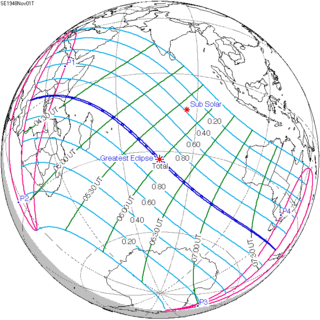 Total | |
| 147 | April 28, 1949 Partial |
152 | October 21, 1949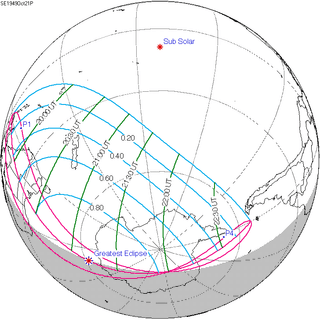 Partial | |
gollark: Yes.
gollark: ++tel dial YanksTowelBegin
gollark: In the webhook bit.
gollark: It *explicitly* does this: `allowed_mentions=discord.AllowedMentions(everyone=False)`
gollark: Broken how?
References
- van Gent, R.H. "Solar- and Lunar-Eclipse Predictions from Antiquity to the Present". A Catalogue of Eclipse Cycles. Utrecht University. Retrieved 6 October 2018.
External links
- Earth visibility chart and eclipse statistics Eclipse Predictions by Fred Espenak, NASA/GSFC
This article is issued from Wikipedia. The text is licensed under Creative Commons - Attribution - Sharealike. Additional terms may apply for the media files.
.jpg)
